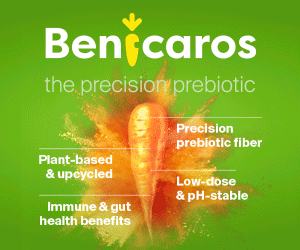The latest news, trends, analysis, interviews and podcasts from the global food and beverage industry
Keeping the cold chain intact is one of the biggest priorities for the food and beverage industry, particularly during the summer months. Jordan Knight, director of product engineering at supply chain solutions company Overhaul, explores how today’s modern communications technologies are making the cold chain more effective and sustainable.

Breaks in the cold chain can lead to serious product spoilage, quality degradation, food safety incidents and significant financial losses. According to the Food and Agriculture Organization, 14% of global food production is lost between harvest and retail, costing companies more than $400 million annually.
Traditionally, monitoring the cold chain has involved static data loggers that record time and temperature data for a shipment. However, these provide limited visibility, capturing data only at the start and end points. Bringing these data loggers online through radio frequency technology gives companies real-time information while keeping costs low. This offers end-to-end monitoring and intervention capabilities that ensure cold chain integrity.
Introducing this communications technology to the typically analogue process of shipping food also allows companies to track shipment safety. Our research shows that cargo theft increased by 38% year-over-year in Q1 of 2024, with food and beverage shipments being among the most targeted.
An integrated solution combines cold chain monitoring for quality assurance with protective security services like theft monitoring, recovery assistance and crisis response into a single offering. By leveraging Internet of Things (IoT) devices, cellular connectivity, RFID tags and other technologies, these solutions provide real-time visibility into a shipment’s location, temperature conditions and potential security risks. Historically, companies have had to track quality and security separately.
Let’s explore how technology makes the cold chain more secure and sustainable for a sector that relies heavily on maintaining solid product margins.
Keeping the cold chain intact
Combining real-time monitoring with security tracking makes the cold chain easier for food and beverage producers to oversee. They can detect and intervene by gaining an integrated view of temperature data and shipment security insights before potential spoilage or theft events occur.
The alerts are granular – they won’t just call out that a truck is about to be out of the ideal temperature range; they can pinpoint a specific case. This allows companies to proactively reroute shipments, adjust refrigeration units or coordinate recovery efforts to mitigate product losses.
Data-driven visibility also illuminates inefficiencies and bottlenecks in cold chain processes. Analytics on temperature trends, dwell times, lane risk profiles and other patterns allow companies to continuously improve operations, for an understanding of where shrinkage occurs and how specific distribution
centres perform.
From a sustainability standpoint, reducing product losses from spoilage and shortening shipment miles through optimised routing decreases the environmental impact of the cold chain through reduced food waste and emissions. Rather than juggling separate quality and security monitoring systems, shippers gain a single pane of glass view with integrated solutions, streamlining workflows and enhancing responsiveness.

What’s under the hood?
IoT devices at the core of these integrated cold chains and security monitoring solutions continuously track and transmit data on key parameters such as temperature, location, light exposure, humidity and shock events. Traditional solutions used static loggers, missing the full potential of the collected data.
Connected devices enable companies to aggregate data and generate new insights.
These IoT sensors typically use low-power wireless technologies like Bluetooth Low Energy or radio-frequency identification to communicate data to cellular or satellite-connected gateways installed on trucks, rail cars or containers. The gateways transmit the sensor data via encrypted cellular or satellite links to cloud-based monitoring platforms in real time.
The data undergoes analysis and processing in the cloud, giving control towers more visibility into the status of shipments. This allows the system to automatically detect deviations from scheduled routes, temperature excursions, potential theft events like unexpected stops, and other risks to the shipment’s security and integrity.
When actionable events are detected, configurable alert workflows trigger notifications to stakeholders so they can initiate appropriate response protocols. This could include rerouting a shipment, remotely adjusting refrigerated truck temperatures, dispatching security personnel or other interventions.
The cloud platforms structure the data, allowing companies to monitor shipments, analyse historical trends and optimise their cold chain performance. By converging security and product quality monitoring, these solutions eliminate fragmented data streams and siloed processes that were previously disconnected.

Finding the right fix
Implementing these integrated IoT monitoring systems involves up-front technology investments and integration complexities, but the return on investment varies.
For companies transporting high-value products like caviar, the costs may be justifiable given the need for granular, real-time monitoring down to the package level. For lower-value shipments like milk, a baseline solution capturing data for analytics and compliance may suffice initially.
Transporting food and beverages, regardless of their value, is complex. Intelligent cold chain solutions that offer proactive controls, rather than just retrospective reporting, are likely to become industry standards rather than competitive advantages. A future with intelligent, sustainable cold chains can help the industry finally tackle the long-standing issues of spoilage, waste and losses that have been affecting supply chains for decades.
#supplychain #coldchain #refridgeration #technology













.jpg)